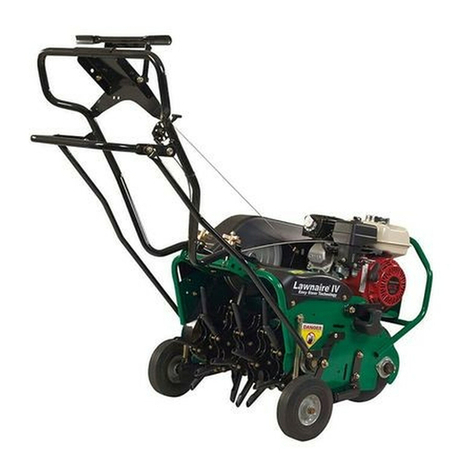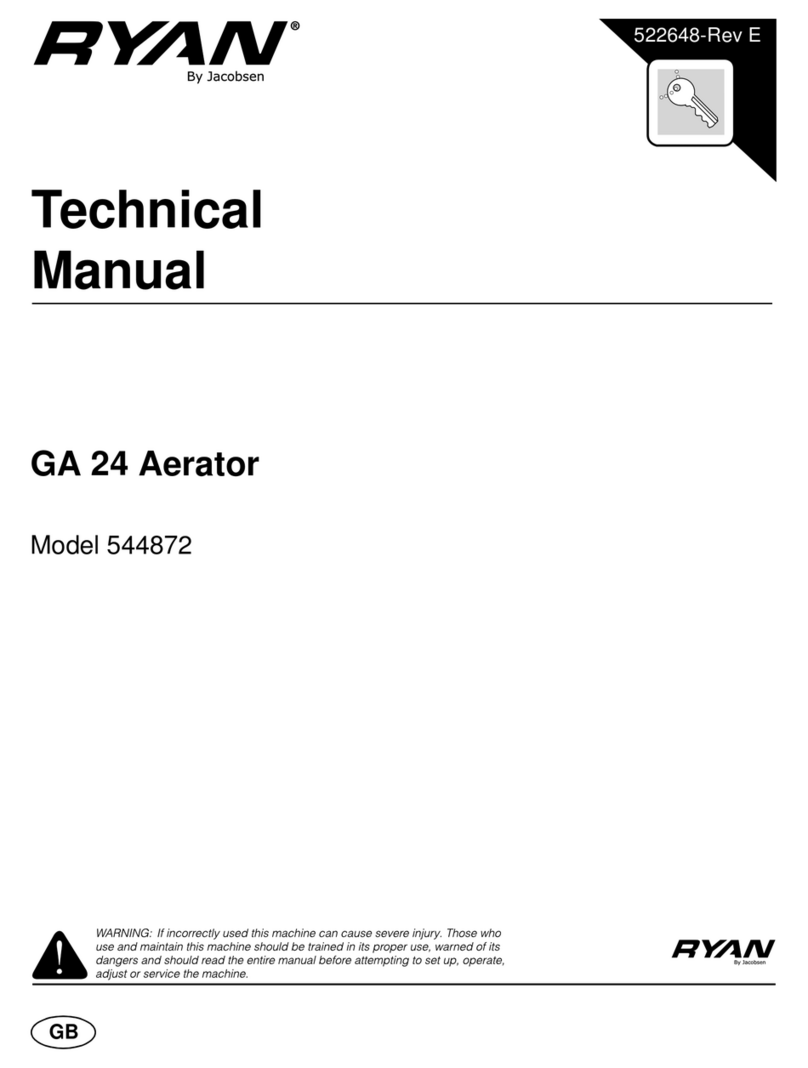4
Lawnaire
28
OPERATING SAFELY
In general
- Use extra care when loading or unloading the
machine into a trailer or truck.
- Slow down and use caution when making turns
and crossing roads and sidewalks. Stop tines if
not aerating.
- Do not run the engine in an enclosed area where
dangerous carbon monoxide fumes can collect.
- Never leave a machine unattended. Always
disengage times, traction drive ans stop engine
before leaving machine.
Starting
- Start only according to instructions in this manual
or on the machine.
- Before attempting to start the engine, make sure
the traction drive and tines are disengaged.
- When starting the engine, make sure hands and
feet are clear of the tines.
- Do not change engine governor settings or
overspeed the engine. Operating the engine
at excessive speed can increase the hazard of
personal injury.
Interrupting operation
- Before leaving the operator's position:
- Park on level ground.
- Disengage the traction drive and tines.
- Shut off the engine.
- Disengage the tines and wait until they quit
moving:
- when not aerating;
- for transport;
- when crossing surfaces other than grass.
- Stop the engine, disengage the tines and traction
drive and wait until the tines stop moving before
refueling.
- Stop the engine, disengage the traction drive and
tines and disconnect the spark plug wire(s) or
remove the key:
- before checking, cleaning or working on the
machine;
- after striking a foreign object. Inspect the
machine for damage and make repairs before
restarting;
- if the machine begins to vibrate abnormally:
shut off machine immediately. Inspect and
make repairs as needed before restarting;
- except for repairs or adjustments as specifically
noted, such as for carburetor adjustment,
where the engine must be running. Keep
hands and feet clear of moving parts in these
circumstances.
- Allow the tines to come to a complete stop when
stopping operation to inspect the machine, do
maintenance or repair.
- Reduce the throttle setting during engine shut-
down and, if the engine is provided with a shut-
off valve, turn the fuel off at the conclusion of
aerating.
OPERATING SAFELY
MANEUVERING SAFELY
In general
- Slow down before turning.
- Be aware when approaching blind corners,
shrubs, trees, tall grass or other objects that may
obscure vision.
Slopes
Slopes are a major factor in loss-
of-control and tipover accidents
that sometimes lead to severe
injury or death. All slopes require
extra caution.
- Do not aerate on slopes if
uneasy or uncertain. Ultimate responsibility for
safe operation on slopes rests with the operator.
- Do not aerate excessively steep slopes.
- Aerate across slopes, not up and down.
- Avoid starting or stopping on a slope. If tires lose
traction, disengage the tines and proceed slowly
straight down the slope.
- Keep all movement on the slopes slow and
gradual. Do not make sudden changes in speed
or direction.
- Do not turn on slopes unless necessary, and then
turn slowly and downhill when possible.
- Stay away from slopes if the ground is loose or if
caught in the rain during mowing.
- Use lower speeds on a slope to avoid stopping or
shifting.
WARNING
MANEUVERING SAFELY
SAFETY
































